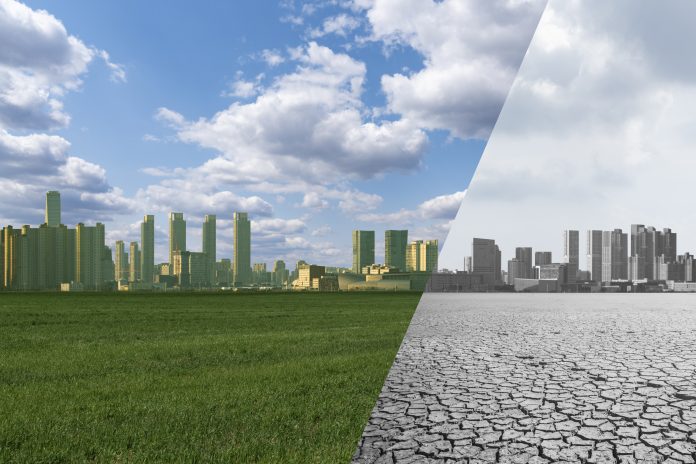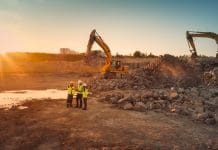James de La Salle, Partner at CIL, argues that there is no one answer to decarbonisation across the European housing sector, and a blended approach of measures is required to achieve decarbonisation in construction
Buildings are today the biggest energy consumer across Europe, responsible for 40% of energy and 36% of greenhouse gas emissions. From construction through use, renovation and demolition, our buildings are not doing us any sustainability favours – 75% of the region’s building stock is considered energy inefficient.
The green agenda is undoubtedly a major driver for change in the built environment sector. Still, it has proven difficult to achieve consensus on what measures are effective in achieving long-term decarbonisation in construction.
As reported in October, the EU hoped to reform its Energy Performance of Buildings Directive and introduce mandatory Minimum Energy Performance Standards for renovating the most inefficient buildings. However, this has since been limited to commercial buildings, significantly reducing the impact of the new law.
We’re now facing the biggest energy crisis of modern times. The need for an agreed plan of action that addresses both the root causes of the problem and supports a variety of investments to address regional variation in buildings design, energy generation and consumption is urgent.
Political will versus electioneering
In the UK, fear of upsetting the political applecart has driven unclear decisions on where to focus stimulus for change. Many people don’t want to insulate their homes in a way that is effective but costly and detrimental to the cosmetics of the building.
Heat pumps are seen as the cleaner, greener alternative to gas-powered boilers. However, these are not yet a practical mass substitute, are prohibitively expensive, and do not reduce emissions for households in some situations. Given the electricity that heat pumps require to operate is often generated and supplied by carbon-intensive grids burning fossil fuels, gas boilers are often more effective.
A more effective immediate measure for the UK would be investing in insulation and renovation measures to reduce the need for energy consumption, reducing both consumer cost and carbon emissions. The UK Green Building Council wasted no time urging the new Prime Minister Rishi Sunak to follow through on his earlier suggestions that hundreds of millions of pounds currently focused on heat pumps should be diverted into insulating homes.
Energy mix makes a difference
Returning to a pan-European view, differing energy mixes are a major hurdle when defining and agreeing on a uniform approach to decarbonisation on a broader geographical scale – even internationally. The enormous difference in grid infrastructure across the region means there is no ideal, one-size-fits-all solution.
The UK’s long-term reliance on gas boilers is linked to the fact that 41% of our energy comes from North Sea Gas reserves. This puts the UK far behind other countries regarding its decarbonisation opportunity. France, for example, takes 42% of its energy from nuclear, making electric heating systems a real opportunity there. Sweden is a green leader with half of its central heating coming from district heating systems.
These energy source variances create two key challenges. The first is that they highlight the different make-up and efficiency levels of grid infrastructure, affecting the ease at which countries can decarbonise. The second is that there is no single measure that will work internationally: a blended range of measures is needed. The correct measures must consider built environment challenges, grid suitability, and installation and running costs.
For example, while heat pumps are inherently green, they can’t match a modern combi gas boiler for instant heat in a small unit. They’re unsuitable for many multi-tenant dwellings and require high insulation levels to work effectively. Not to mention the high installation price, often making them cost-prohibitive in the first place.
Short, medium, and long term approaches
A large part of the issues faced in the approach to decarbonisation in construction is a tendency to put the cart before the horse. Reaching the decarbonisation endgame requires us to take short and intermediary measures to help control cost, consumption, and carbon footprint, while more permanent and far-reaching solutions are also addressed. In our recent research, Heating Up – The Data Behind the Debate on Green Homes, we highlight three key steps to effective decarbonisation.
In the short term, the focus should be on quickly reducing CO2 and household spending by continuing with mature technologies driven by regulations, namely improving home efficiency through insulation (including incentives and subsidies) and rollout of smart devices to increase consumer awareness.
Mid-term, the focus should shift to greener solutions while truly net zero technologies are developed. With improved insulation addressed in phase one, heat pumps will become a more useful option for some, and electric boilers will be appropriate for others.
In the long-term, decarbonisation requires grid overhaul, driven through Government supported innovation to fund and commercialise new technologies – for example, nuclear fusion, more effective renewable energy methods and hydrogen generation.
This is a 30-year journey, but to reach the eventual goal, we need to address the immediate problems of consumption and energy efficiency.
As we face the effects of a rapidly changing climate and struggle to meet energy costs, it is natural to look for a great panacea, but put simply: there isn’t one. Effective decarbonisation requires an aggregate and staged approach to account for the short-term issues and vast regional differences in both energy consumption, heating methods and building design.
James de La Salle

Partner
CIL

















